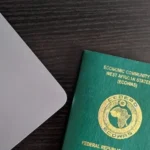
171 World leaders on Friday in New York signed the Paris Agreement on Climate Change.
News Agency of Nigeria (NAN) reports that 171 out of the 193 UN Member States began the signing ceremony.
First to sign the agreement was President Francoise Hollande of France.
He was followed by Marshall Islands, Nauru, Palau, Somalia, State of Palestine, Barbados, Belize and Fiji.
Others are Grenada, Saint Kitts and Nevis, Samoa, Tuvalu, Maldives, Saint Lucia, Mauritius, Peru, Democratic Republic of the Congo, Bolivia, Brazil, China, Canada and Italy.
Others who are expected to sign are the Russian Federation, United States of America, Morocco, Bulgaria, Central African Republic, Colombia, Côte d’Ivoire, Croatia, Gabon, Guatemala, Guinea, Guyana and Haiti.
Others are Hungary, Lithuania, Afghanistan, Albania, Algeria, Andorra, among others.
NAN reports that the UN says the large number of countries set a record for the most countries to sign an international agreement on one day; previously set in 1982, when 119 countries signed the Law of the Sea Convention.
Earlier, UN Secretary-General Ban Ki-Moon had asked countries to provide an update on how their governments would implement their national climate plans and integrate them into their overall sustainable development plans.
He also asked them to provide a road-map for increasing ambition over time to achieve the overall aim of limiting global temperature rise to well below two degrees Celsius; and given the grave risks, strive for below 1.5 degrees Celsius.
Ban urged them to indicate their governments’ timetable for ratifying the Paris Agreement and to share how they are accelerating climate action before 2020 by drawing on the ingenuity, resources and efforts of all sectors of society.
NAN reports that parties with special roles such as those who, in addition to signing, deposited their instrument of ratification or acceptance of the Paris Agreement and were called to sign the Agreement first.
These are Barbados, Belize, Fiji, Grenada, Maldives, Mauritius, Nauru, Saint Lucia, Samoa, Somalia and Tuvalu.
NAN reports that there is only one original copy of the agreement, which contains the full text of the agreement in the six official languages of the United Nations – Arabic, Chinese, English, French, Russian and Spanish.
There is a page for each of the 197 Parties to the UN Framework Convention on Climate Change.
NAN reports that implementation of the national climate plans that are at the heart of the Paris Agreement will benefit from scaled up climate action by all actors at all levels.
It also directly will be contributing to progress on a full range of Sustainable Development Goals (SDGs).
These include: energy, water, food, transport and others. Strengthened action on climate change is not only possible, it is practical, beneficial and replicated on a larger scale.
The agreement shall enter into force on the 30th day after the date on which at least 55 Parties to the United Nations Framework Convention on Climate Change (UNFCCC), have deposited their instruments of ratification, acceptance, approval or accession.
NAN also reports that countries have one year to sign the agreement following, which they may ratify, accept or approve the Agreement.
States that have not signed will still have the possibility of joining the agreement by depositing an instrument of accession with the Secretary-General.
The Paris agreement, like most international agreements concluded under the auspices of the United Nations, designates the Secretary-General to serve as the depository.
This means that the Secretary-General is the sole custodian of the original of the agreement, and performs a number of key functions relating to participation in the agreement.
NAN reports that this year’s Earth Day coincides with the ceremony of the signing of the agreement.
In 2009, the UN General Assembly decided to designate April 22, as International Mother Earth Day. (NAN)

 Join Daily Trust WhatsApp Community For Quick Access To News and Happenings Around You.
Join Daily Trust WhatsApp Community For Quick Access To News and Happenings Around You.


